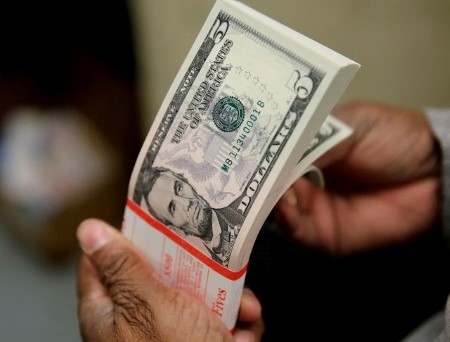




Policy Rate Updates: Double cut finale
 DOWNLOAD
DOWNLOAD

Monthly Economic Update: One for the road
 DOWNLOAD
DOWNLOAD

Inflation Update: Still low, still slow
 DOWNLOAD
DOWNLOAD


Funds bet on even deeper US yield curve inversion: McGeever

ORLANDO, Florida, June 18 (Reuters) – Speculators went into the US Federal Reserve’s policy meeting last week holding their biggest ever net short position in two-year Treasuries futures and betting on a further inversion of the US yield curve.
Whether the Fed hikes interest rates again after its pause this month remains to be seen, but funds’ yield curve trade looks on the money – short-dated yields are surging above 10-year borrowing costs and the gap is approaching historic levels.
The latest Commodity Futures Trading Commission (CFTC) data shows that funds increased their record net short positions in two-year Treasuries futures in the week through June 13 to more than 1 million contracts and reduced their net short position in the 10-year space for a second week.
A short position is essentially a wager an asset’s price will fall, and a long position is a bet it will rise. In bonds, yields rise when prices fall and move lower when prices increase.
Hedge funds and speculators take positions in bonds futures for hedging purposes, so the CFTC data is not always a reflection of purely directional bets. But it is often a reasonable proxy and a decent indicator of relative value trades.
Funds expanded their already record net short two-year Treasuries futures position to more than 1 million contracts for the first time. The scale of the move lately is remarkable – the net short position has more than doubled in just two months.
At the same time, funds are scaling back their bearish bets on 10-year bonds. They cut their net short position to 691,853 contracts from 753,301 in the week to June 13, bringing the two-week reduction to nearly 160,000 contracts, the biggest move in over a year.
Notably, funds’ net short two-year Treasuries position now exceeds their net short 10-year Treasuries position by some 354,000 contracts. That’s the biggest gap in two years and among the largest on record.
If this is indeed hedge funds betting on an inverted 2s/10s yield curve, they are sitting pretty. The curve, which has been inverted for almost a year, is now inverted by around 95 basis points – that’s doubled in a month and within sight of the 110-bps inversion before the US banking shock in March.
That was the deepest inversion since 1981 and is proving to be a head-scratcher for investors.
An inverted 2s/10s curve has preceded every recession in the past 40 years, as relatively high short-term borrowing costs choke growth, tighten financial conditions, and hit banks’ profits. It may do so again this time but there is no evidence yet, despite the remarkable length and scale of the inversion.
The US regional banking shock in March seems to be in the rear-view mirror. Fed officials have raised their median interest rate projections to include a further 50 basis points of tightening this year, while Wall Street is holding near 14-month highs and volatility across equities, bonds and currencies is plunging.
Risk assets appear to be pricing out recession risk.
“But the yield curve seems to be telling a different story, especially as the New York Fed’s recession probabilities model, which uses the spread between the 10-year and three-month Treasury yield to predict recession twelve months ahead, is at a 70% recession probability for the first time since the 1980s,” Barclays analysts wrote on Friday.
(The opinions expressed here are those of the author, a columnist for Reuters.)
(By Jamie McGeever; Editing by Tom Hogue)
This article originally appeared on reuters.com





 By Reuters
By Reuters